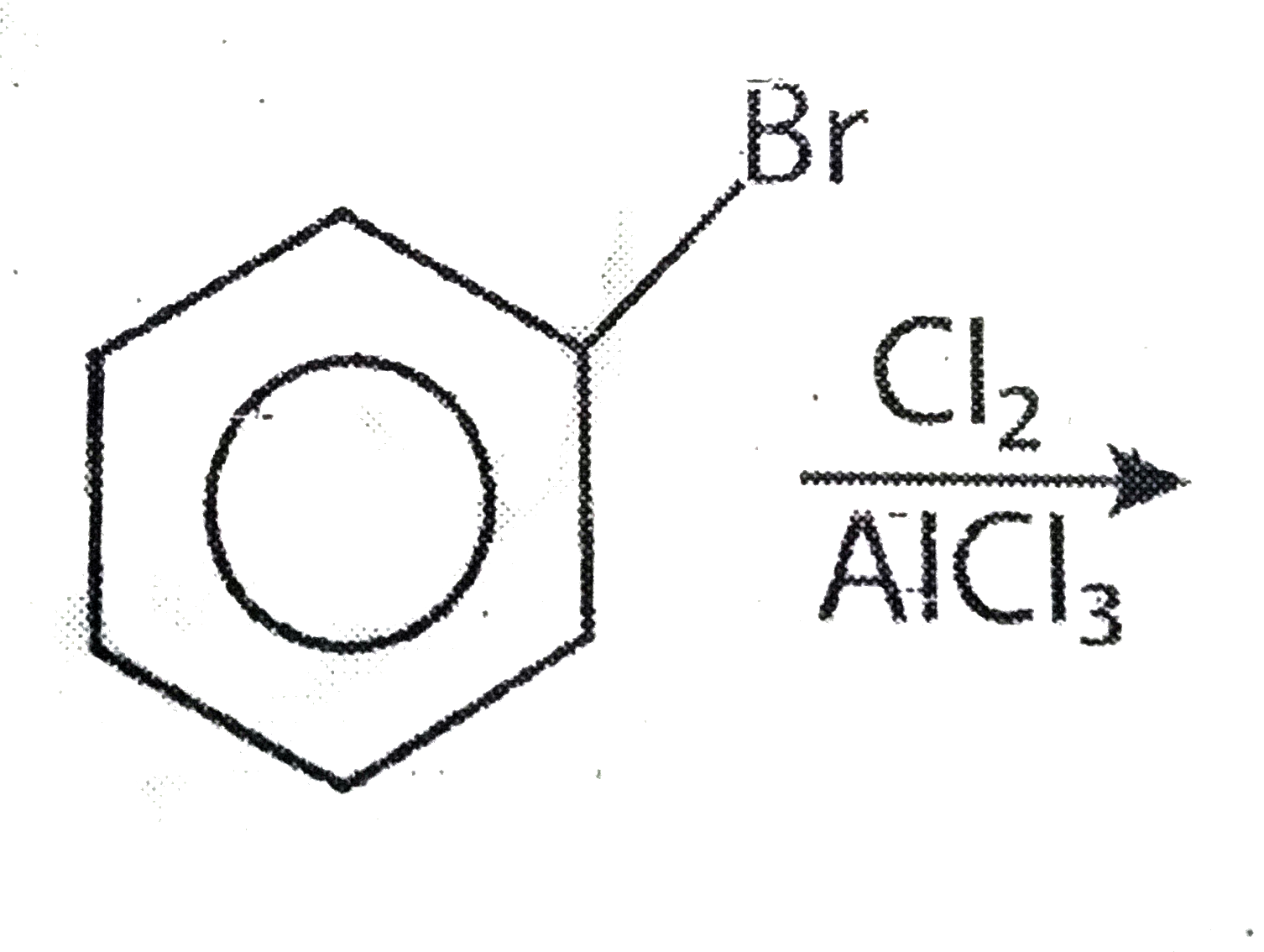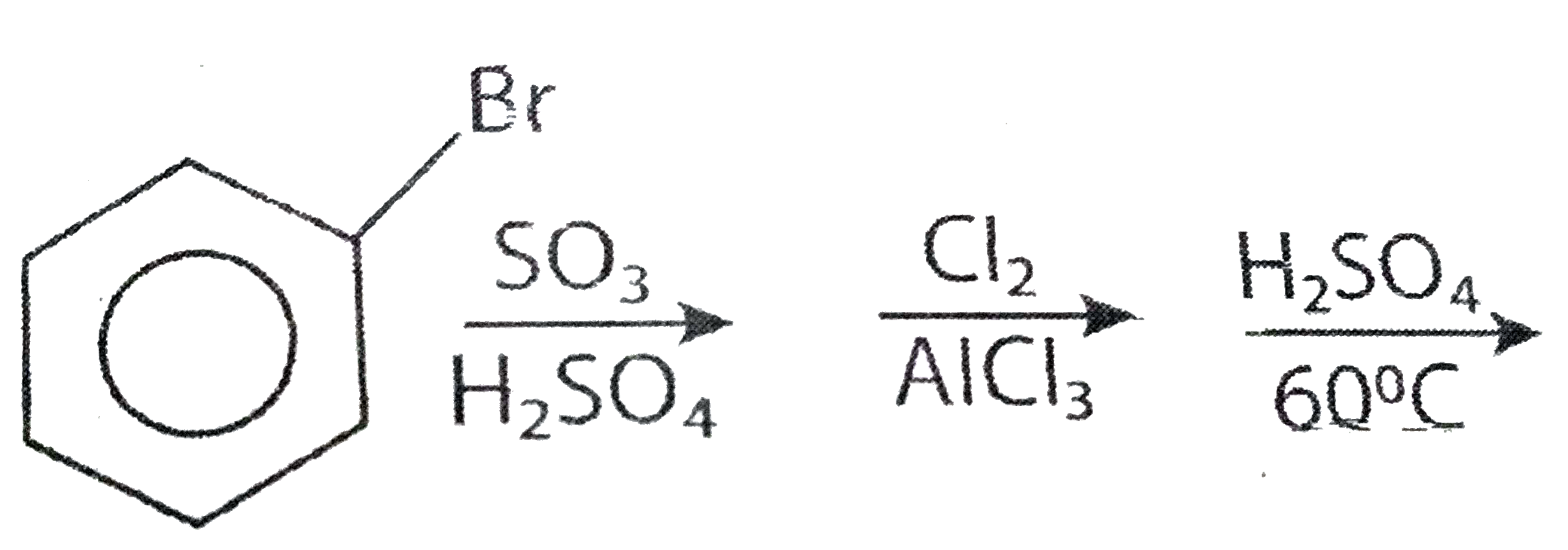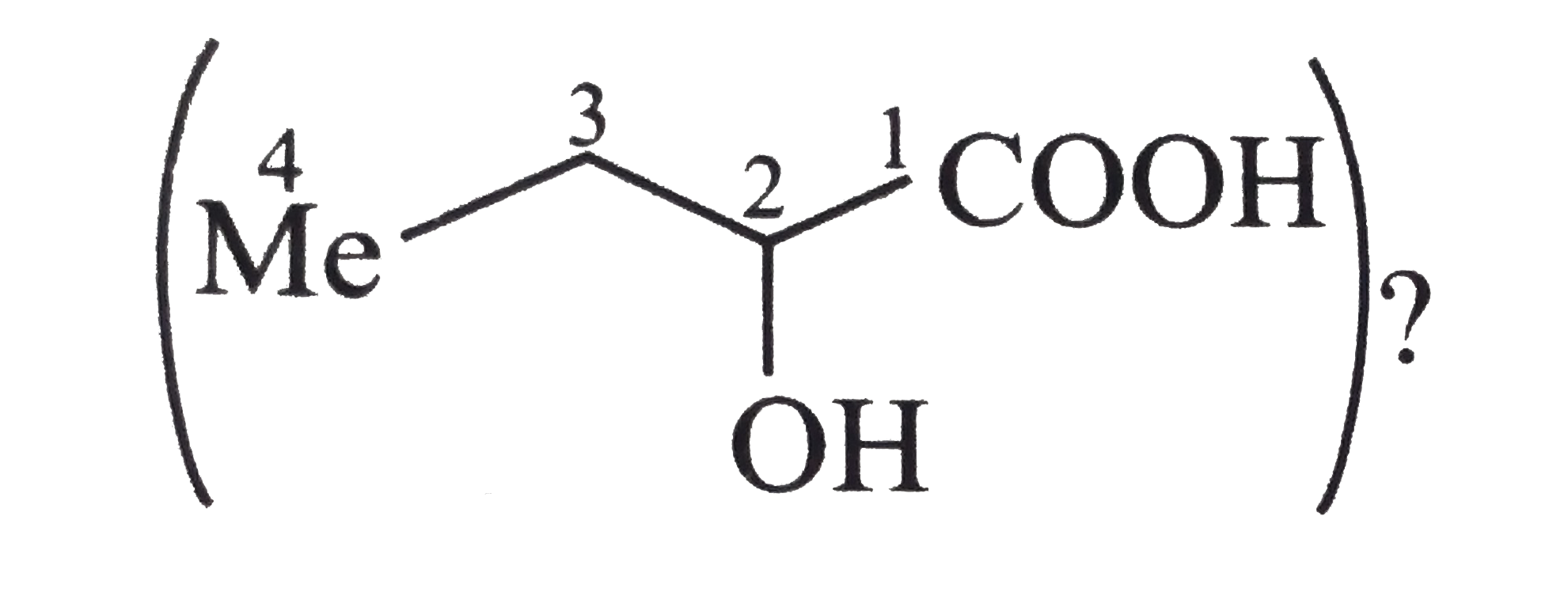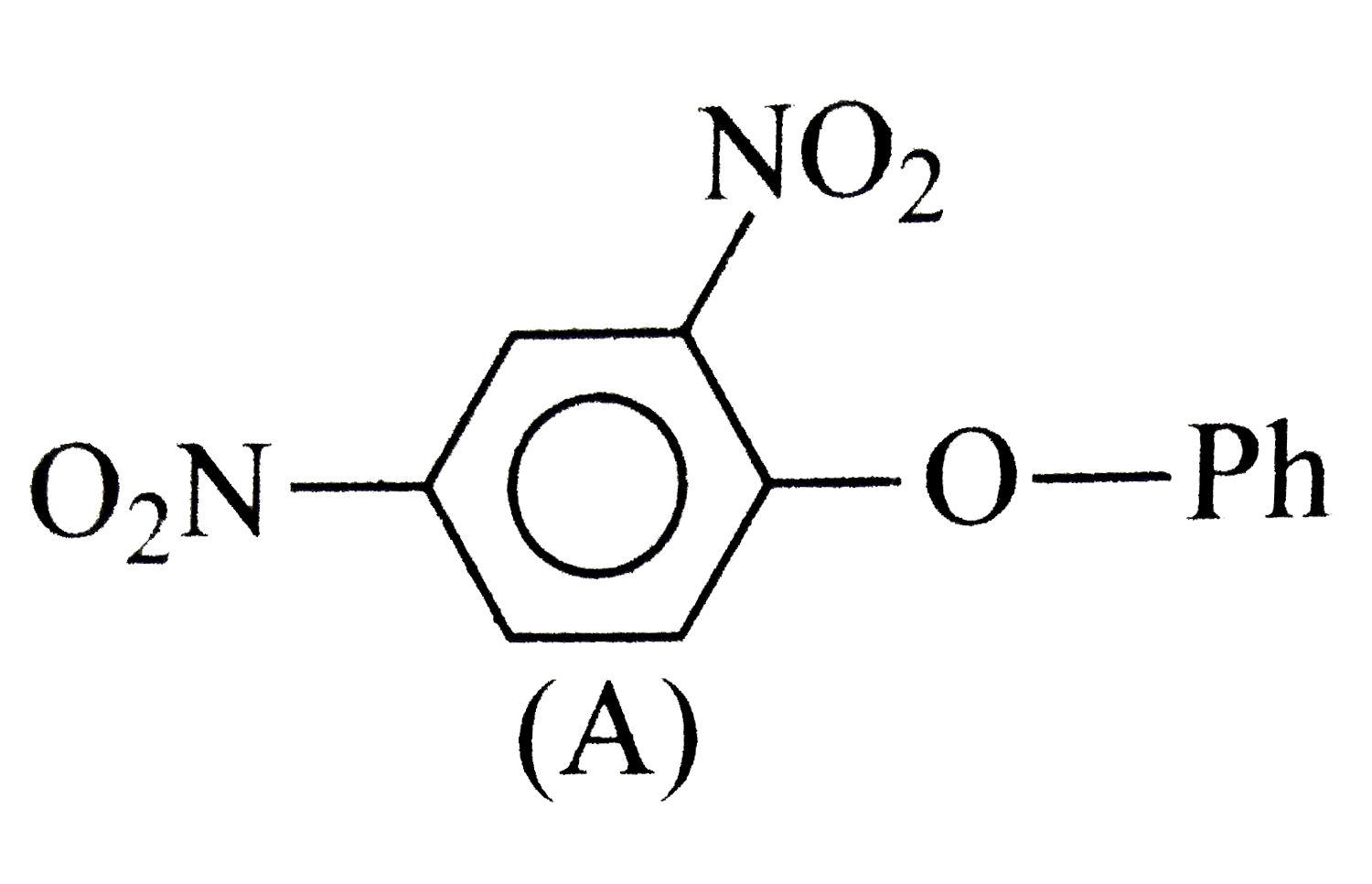Which of the following is the best method for synthesis of 1 - bromo -3- chlorobenzene?




The correct Answer is:C
To synthesize 1-bromo-3-chlorobenzene, we can analyze the options provided in the question step by step. Here’s a detailed solution:
Step 1: Analyze Option A
- Reaction: Bromobenzene undergoes chlorination.
- Expected Product: The major product of this reaction is para-bromochlorobenzene.
- Conclusion: This method does not yield 1-bromo-3-chlorobenzene as the major product, so this option is incorrect.
Hint: Consider the directing effects of substituents on the aromatic ring during electrophilic substitution reactions.
Step 2: Analyze Option B
- Reaction: Bromobenzene reacts with SO3 and H2SO4 to form para-bromobenzenesulfonic acid.
- Next Reaction: This sulfonic acid reacts with Cl2 in the presence of AlCl3.
- Expected Product: The product formed is para-bromomethachlorobenzenesulfonic acid.
- Final Reaction: This product reacts with H2SO4 at 60°C, leading to further substitution, but does not yield the desired product.
- Conclusion: This option does not lead to 1-bromo-3-chlorobenzene, so it is incorrect.
Hint: Pay attention to the position of the sulfonic acid group and its influence on further substitutions.
Step 3: Analyze Option C
- Starting Material: Nitrobenzene is used.
- Reaction: Nitrobenzene undergoes halogenation, yielding meta-chloro-nitrobenzene (due to the meta-directing effect of the nitro group).
- Next Reaction: This compound is treated with zinc and HCl, reducing the nitro group to an amino group, yielding meta-chloroaniline.
- Next Step: The meta-chloroaniline reacts with HNO2 to form a diazonium salt.
- Final Reaction: The diazonium salt reacts with Cu2Br2, leading to the formation of 1-bromo-3-chlorobenzene.
- Conclusion: This option successfully synthesizes the desired product, making it the correct choice.
Hint: Recognize the importance of the nitro group in directing the subsequent reactions and the role of diazonium salts in aromatic substitution.
Step 4: Analyze Option D
- Starting Material: Chlorobenzene is nitrated.
- Expected Product: The major product is para-chloro-nitrobenzene.
- Next Reaction: This compound is treated with zinc and HCl, yielding para-chloroaniline.
- Next Step: The para-chloroaniline reacts with HNO2 to form a diazonium salt.
- Final Reaction: The diazonium salt reacts with CuBr2, but this leads to a product where chlorine and bromine are at the para positions.
- Conclusion: This option does not yield 1-bromo-3-chlorobenzene, making it incorrect.
Hint: Consider the positions of substituents when working with diazonium salts and their reactions.
Final Conclusion
The best method for synthesizing 1-bromo-3-chlorobenzene is Option C.
- Reaction: Bromobenzene undergoes chlorination.
- Expected Product: The major product of this reaction is para-bromochlorobenzene.
- Conclusion: This method does not yield 1-bromo-3-chlorobenzene as the major product, so this option is incorrect.
- Reaction: Bromobenzene reacts with SO3 and H2SO4 to form para-bromobenzenesulfonic acid.
- Next Reaction: This sulfonic acid reacts with Cl2 in the presence of AlCl3.
- Expected Product: The product formed is para-bromomethachlorobenzenesulfonic acid.
- Final Reaction: This product reacts with H2SO4 at 60°C, leading to further substitution, but does not yield the desired product.
- Conclusion: This option does not lead to 1-bromo-3-chlorobenzene, so it is incorrect.
- Starting Material: Nitrobenzene is used.
- Reaction: Nitrobenzene undergoes halogenation, yielding meta-chloro-nitrobenzene (due to the meta-directing effect of the nitro group).
- Next Reaction: This compound is treated with zinc and HCl, reducing the nitro group to an amino group, yielding meta-chloroaniline.
- Next Step: The meta-chloroaniline reacts with HNO2 to form a diazonium salt.
- Final Reaction: The diazonium salt reacts with Cu2Br2, leading to the formation of 1-bromo-3-chlorobenzene.
- Conclusion: This option successfully synthesizes the desired product, making it the correct choice.
- Starting Material: Chlorobenzene is nitrated.
- Expected Product: The major product is para-chloro-nitrobenzene.
- Next Reaction: This compound is treated with zinc and HCl, yielding para-chloroaniline.
- Next Step: The para-chloroaniline reacts with HNO2 to form a diazonium salt.
- Final Reaction: The diazonium salt reacts with CuBr2, but this leads to a product where chlorine and bromine are at the para positions.
- Conclusion: This option does not yield 1-bromo-3-chlorobenzene, making it incorrect.
The best method for synthesizing 1-bromo-3-chlorobenzene is Option C.
Similar Questions
Knowledge Check
- Question 1 - Select One
Which of the following is the site of protein synthesis?
ADNABnucleolusCribosomesDchloroplasts
Which of the following is must for chlorophyll synthesis
View SolutionWhich of the following is must for chlorophyll synthesis
View SolutionWhich of the following is the best method for the synthesis of α−hydroxy butyric acid (I) ?
 .View Solution
.View SolutionWhich of the following is the best method for the preparation of compound cyclopentyl cyanide from cyclopentyl chloride ?
View SolutionWhich of the following methods is/are correct for the synthesis of
 View Solution
View SolutionWhich of the following would be the best synthesis of benzoic acid from bromobenzene?
View SolutionWhich of the following is the best synthesis of the ether (A) shown below:
 View Solution
View Solution

